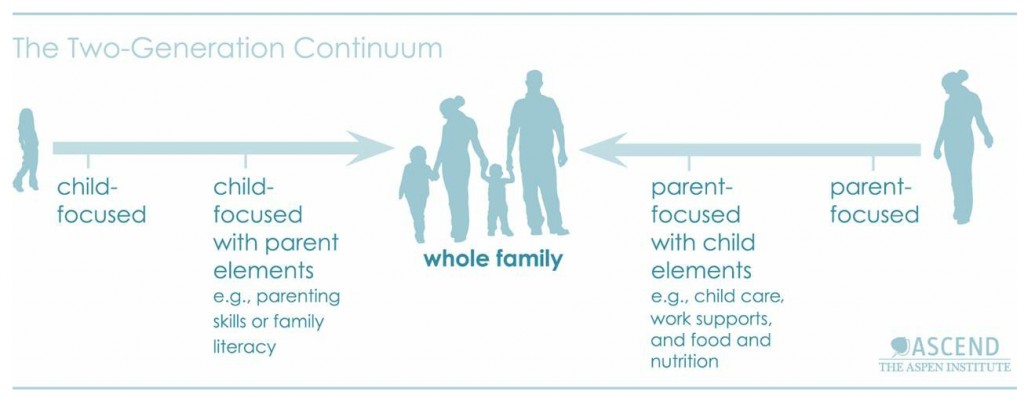In honor of our nation’s independence last week, the History Channel aired shows highlighting fun and little-known facts about the U.S. – for example, did you know that the Great Depression prompted the creation of the shopping cart? To cut costs, grocers stopped delivering food directly to homes, forcing customers to come to the store. Seeing that baskets limited what customers could carry and, therefore, purchase, an ingenious grocer invented the shopping cart. Just as small changes like food not being delivered to the home or large events like the Revolutionary War gave Americans more independence and freedom to choose, so too do two-generation (2Gen) approaches. They provide complementary services to parents and children with the hope of producing greater independence and self-sufficiency for families. Here are a few things you might not have known about 2Gen trends in 2015.
- Fields from all disciplines are converging
Even though the 2Gen field is still developing, early results suggest that this approach has four essential components: education (i.e., early childhood education, postsecondary and employment pathways), economic supports, health and well-being, and social capital. Within these components best and promising practices from various fields are converging. Asset building, bundled service delivery pioneered by the Annie E. Casey Foundation and organizations like CFED are the cornerstones of the economic support piece. Meanwhile, workforce demand and research on the impact of maternal education on child outcomes are driving the education component for parents. Silos are being broken in the 2Gen model, and best practices from all areas are being leveraged.
- Leaders are trying to change the system, not just one program
Increasingly, leaders in the 2Gen movement have been trying to scale this approach by changing systems rather than disseminating the approach one program at a time. Ascend has been working with community college systems, municipal housing authorities and early childhood education systems to streamline and coordinate services that address the needs of both parents and their children. Early Head Start and Head Start are seen as prime candidates for this scaling strategy as it is a convenient, centralized point for parents to receive the support they need to achieve their goals while addressing the developmental needs of their children.
- 2Gen policies are trying to ensure win-wins
Advocates of 2Gen approaches are working to align the priorities of government agencies so that parents’ and children’s needs do not conflict. The system is often misaligned, and parents are forced to make difficult tradeoffs between earning a stable income and their children’s education. By pushing for flexible employer policies, supporting the expansion of earned income tax credits and building bridges to affordable childcare for those benefitting from the Workforce Innovation and Opportunity Act, Higher Education Act or other career pathway programs, parents may be able to secure a higher paying job while also giving their children the best opportunities to grow.
2Gen approaches are promising paths for helping more families achieve the independence and freedom that are hallmarks of our country. There are so many great examples of organizations working on these strategies, and if you are among these 2Gen pioneers, please share your approach with us. Join us next week as we recap some great tips from fellow entrepreneurs in our Dog Days of Summer blog.


We formed an L3C to focus on training agencies how to work with families with a disabled child. Most assess and treat children with little input of the parents and no support for the extended family despite what the IDEA and ACA laws state. Few foundations are set up to support families either but the Case Workers see the needs immediately and respond if the agencies allow them. Our tools and processes unleash the power of self determination and goal setting with action steps. It saves time, money and effort.